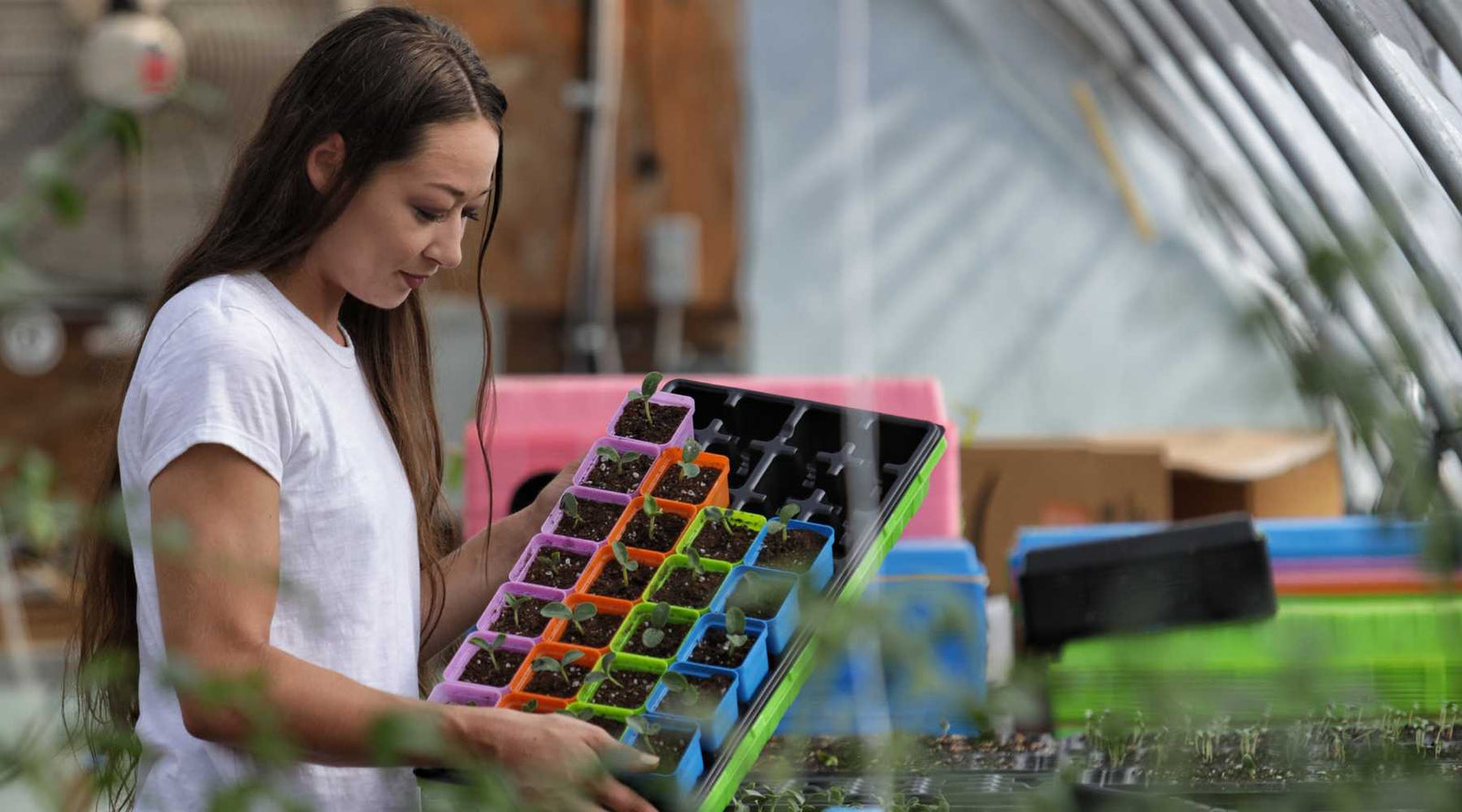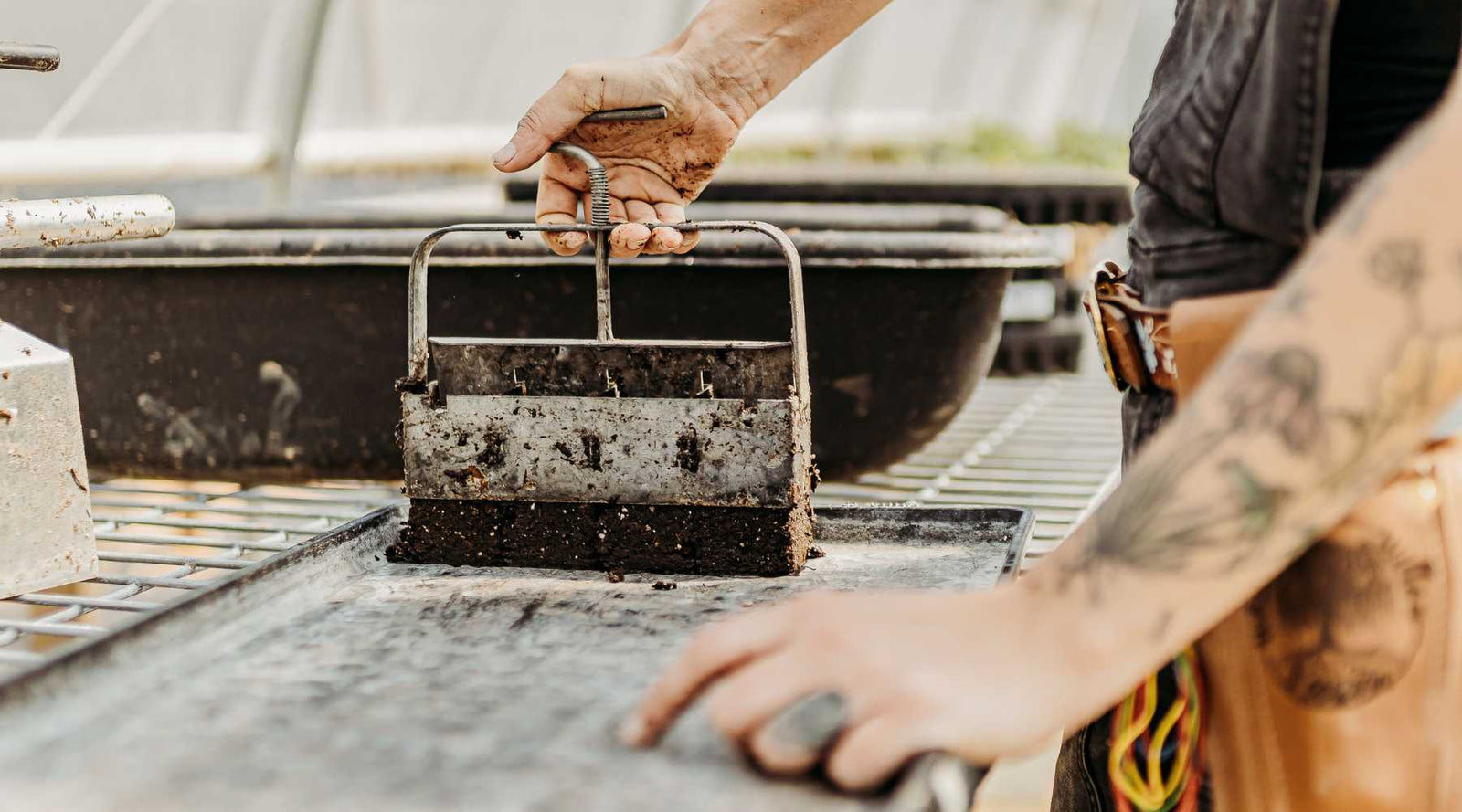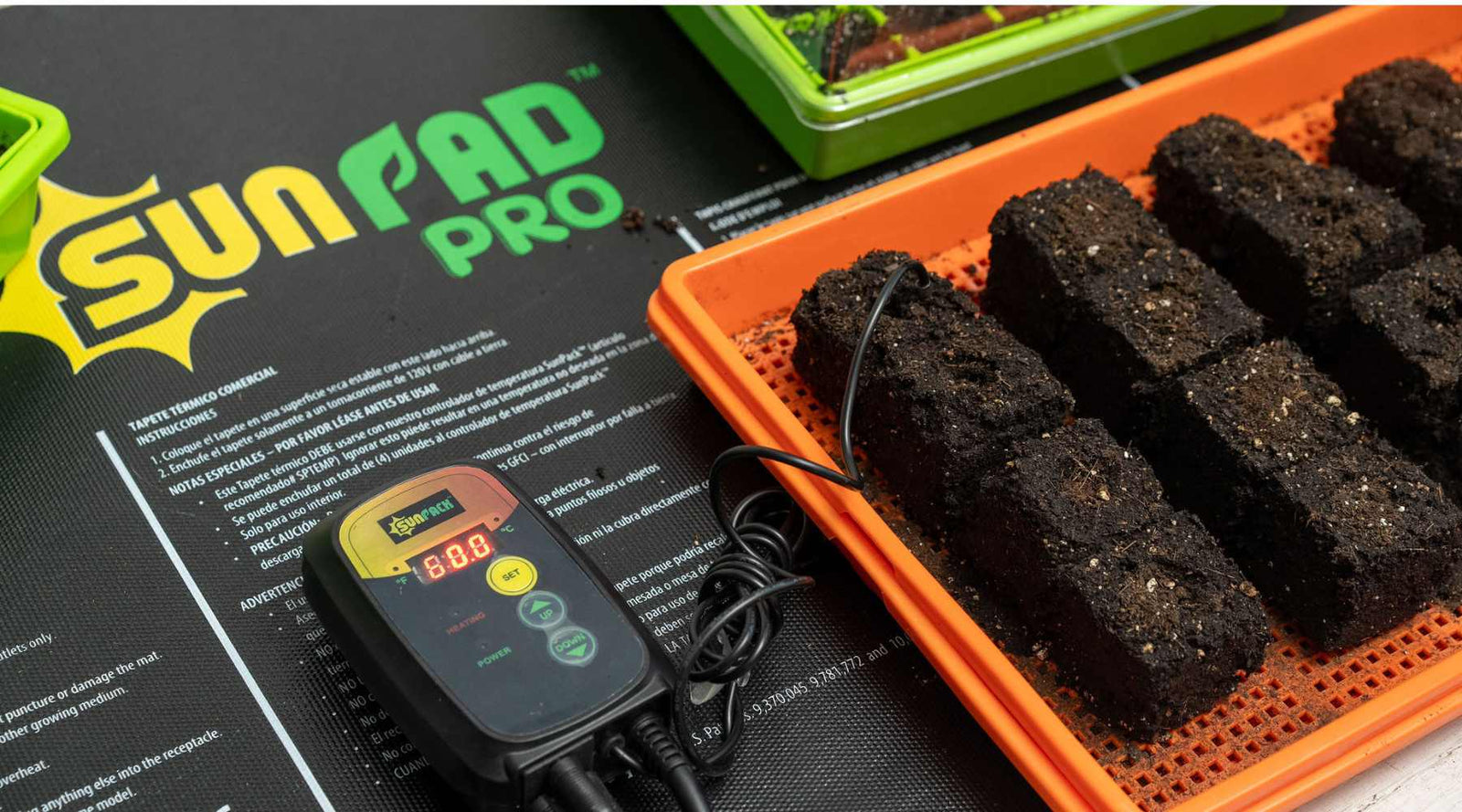Free Shipping on Orders over $75 to the Contiguous US
Free Shipping on Orders over $75 to the Contiguous US
Left with Extra Seed Starts? Try this.
February 24, 2023 3 min read 0 Comments

WHAT DO I DO WITH ALL THESE PLANTS?
If you are anything like us, you have extra plant starts. Maybe just a few after you have transplanted everything out. Maybe a lot because, well, I might as well plant this whole packet of flowers at once, right? Or perhaps you are starting trees and need to let them grow an extra year before they are ready to go in the ground.
SLAP AND TICKLE METHOD
For all of these strategies, I use the same process to transplant. My mother taught me the Slap and Tickle method of transplanting when I was little, and it is still the best way I have found. Once your up pot has soil in it and is ready to go, make a hole about the size of your transplant. To remove the plant, start by lightly slapping each side of the pot.
Next, turn the plant upside down while holding the main stem between your fingers and the majority soil surface on your palm. Slap the bottom of the pot a few times until the root mass comes loose and the plant is resting in your hand. Tickle the roots apart a little if they have become root-bound. This action helps the plant to root more successfully in its new container. Place into the larger pot and lightly firm the soil. Water well and protect from the elements until established.
POTTING UP
Potting up is the practice of taking small starts from cell trays and transplanting them into slightly larger pots. There are a few different reasons to pot up your plant starts. Some plants have such a long germination period that starting them in small cells to save room makes more sense, but they will need more space before transplanting. Maybe you started a few weeks early, and now your babies are too big for their pots, but the weather isn't warm enough to set them out yet.
Tip: When potting up, it is a good idea to go with a container around twice the volume of the current container.
MAKING GROW BAGS
Sometimes there just isn't enough space in the garden or row to put in all of those gorgeous starts. Grow bags are great for these if you want to get a few more plants to full size. They can also be used to create value-added items like a pesto or salsa bag. Plant an extra tomato, a pepper, some green onions, and cilantro together in a 7 gallon grow bag. There you have it ready to go, everything you need to make a little salsa with dinner sitting on the porch.
GREAT GIFTS
My favorite thing to do with extra starts is give them away. Especially this last year, with interruptions in the food supply system, people were very appreciative of a gift of something they could grow themselves. Not everyone has the space or the skill to start plants, but many have a little garden space to put them in. I love to have planted grow bags of herbs or pollinator flowers around for housewarmings and life events, so I always have a beautiful gift to take. This year I made up salad bags, salsa bags, and butterfly garden bags to have on hand for any occasion.
TERRIFIC TRADES
Often I don't start everything I'd like to grow from seed. Maybe someone in my area has the types of plants that I want. Offer up what you have on your local Facebook page or Nextdoor. Include what you are looking for. IE. I have way too many cherry tomato plants but didn't start any slicing types this year so I found someone to trade with. I traded a few extra fig tree starts for bergamot because mine didn't germinate this year.
There are so many options to choose from when it comes to extra starts. The very last thing to do is compost them. Keep in mind all the time, effort, and money you put into that beautiful start. Don't let it go to waste. Create something even greater from your beginning.
Happy Growing.
-Emily
Also in How to Grow Seedlings

Soil Blocking 101
April 03, 2024 8 min read 0 Comments
Soil blocking is a method of propagating seedlings that involves filling a metal blocking tool with soil and squeezing to form a compressed cube. Seeds are planted directly into the formed block. Soil blocks come in various sizes and are advantageous for air pruning roots.

How to Use a Humidity Dome for Seed Starting
October 31, 2024 6 min read 0 Comments

How to Use Heat Mats for Starting Seeds
March 07, 2025 11 min read 0 Comments
Recent Articles
- Soil Blocking 101
- How to Use a Humidity Dome for Seed Starting
- How to Use Heat Mats for Starting Seeds
- How to Transplant and Up Pot Seedlings
- Selecting the Right Seed Starting Cell Trays
- How to Wash and Care for Seedling Trays
- Seed Starting 101
- Hydroponic Growing Mediums: How to Plant into Rockwool Cubes
- How to Bottom Water Your Plants (Without Overdoing It) Step-by-Step
- Left with Extra Seed Starts? Try this.
Subscribe
Sign up to get the latest on sales, new releases and more …
